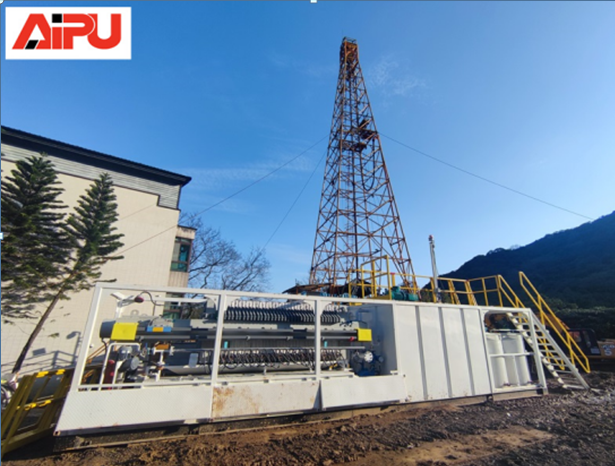Selecting the Right Tools for Offshore Operations
In the realm of oil and gas drilling, the role of solids control equipment in cleaning drilling fluid is nothing short of magical. This equipment ensures the efficiency and safety of the drilling process by removing unwanted solids from the drilling fluid, allowing it to be reused effectively.
Understanding Solids Control Equipment
Solids control equipment is a system designed to separate solids from the drilling fluid. It includes various components such as shale shakers, hydrocyclones, and decanter centrifuges. Shale shakers are the first line of defense, using vibrating screens to remove large cuttings from the fluid. Hydrocyclones, on the other hand, use centrifugal force to separate finer solids based on their size and density. Decanter centrifuges are capable of removing even the smallest particles, providing a high - level of purification for the drilling fluid.
The Importance of Drilling Fluid Cleaning
Clean drilling fluid is crucial for the success of a drilling operation. Firstly, it helps to maintain the stability of the wellbore. Unclean fluid with a high solids content can cause problems such as wellbore collapse and stuck pipe. Secondly, it improves the efficiency of the drilling process. Clean fluid reduces wear and tear on the drilling equipment, extending its lifespan and reducing maintenance costs. Moreover, it enhances the performance of the drill bit, allowing for faster and more accurate drilling.
The Working Mechanism of Solids Control Equipment
Each piece of solids control equipment has its unique working mechanism. Shale shakers operate by vibrating the screens at a high frequency, causing the large solids to be separated from the fluid and discharged. Hydrocyclones work by forcing the drilling fluid into a cone - shaped chamber at high speed. The centrifugal force causes the heavier solids to move towards the outer wall and be discharged at the bottom, while the cleaner fluid exits from the top. Decanter centrifuges use a rotating bowl to create a strong centrifugal field, separating the solids from the fluid based on their density differences.
Benefits and Future Trends
The benefits of using solids control equipment are numerous. It not only saves costs by reusing the drilling fluid but also reduces environmental impact by minimizing the disposal of contaminated fluid. In the future, we can expect to see more advanced solids control equipment. These may feature improved automation, better separation efficiency, and enhanced durability. New materials and technologies will be employed to make the equipment more compact, energy - efficient, and easier to operate, further enhancing the magic of solids control in drilling fluid cleaning.

Understanding Solids Control Equipment
Solids control equipment is a system designed to separate solids from the drilling fluid. It includes various components such as shale shakers, hydrocyclones, and decanter centrifuges. Shale shakers are the first line of defense, using vibrating screens to remove large cuttings from the fluid. Hydrocyclones, on the other hand, use centrifugal force to separate finer solids based on their size and density. Decanter centrifuges are capable of removing even the smallest particles, providing a high - level of purification for the drilling fluid.
The Importance of Drilling Fluid Cleaning
Clean drilling fluid is crucial for the success of a drilling operation. Firstly, it helps to maintain the stability of the wellbore. Unclean fluid with a high solids content can cause problems such as wellbore collapse and stuck pipe. Secondly, it improves the efficiency of the drilling process. Clean fluid reduces wear and tear on the drilling equipment, extending its lifespan and reducing maintenance costs. Moreover, it enhances the performance of the drill bit, allowing for faster and more accurate drilling.
The Working Mechanism of Solids Control Equipment
Each piece of solids control equipment has its unique working mechanism. Shale shakers operate by vibrating the screens at a high frequency, causing the large solids to be separated from the fluid and discharged. Hydrocyclones work by forcing the drilling fluid into a cone - shaped chamber at high speed. The centrifugal force causes the heavier solids to move towards the outer wall and be discharged at the bottom, while the cleaner fluid exits from the top. Decanter centrifuges use a rotating bowl to create a strong centrifugal field, separating the solids from the fluid based on their density differences.
Benefits and Future Trends
The benefits of using solids control equipment are numerous. It not only saves costs by reusing the drilling fluid but also reduces environmental impact by minimizing the disposal of contaminated fluid. In the future, we can expect to see more advanced solids control equipment. These may feature improved automation, better separation efficiency, and enhanced durability. New materials and technologies will be employed to make the equipment more compact, energy - efficient, and easier to operate, further enhancing the magic of solids control in drilling fluid cleaning.








